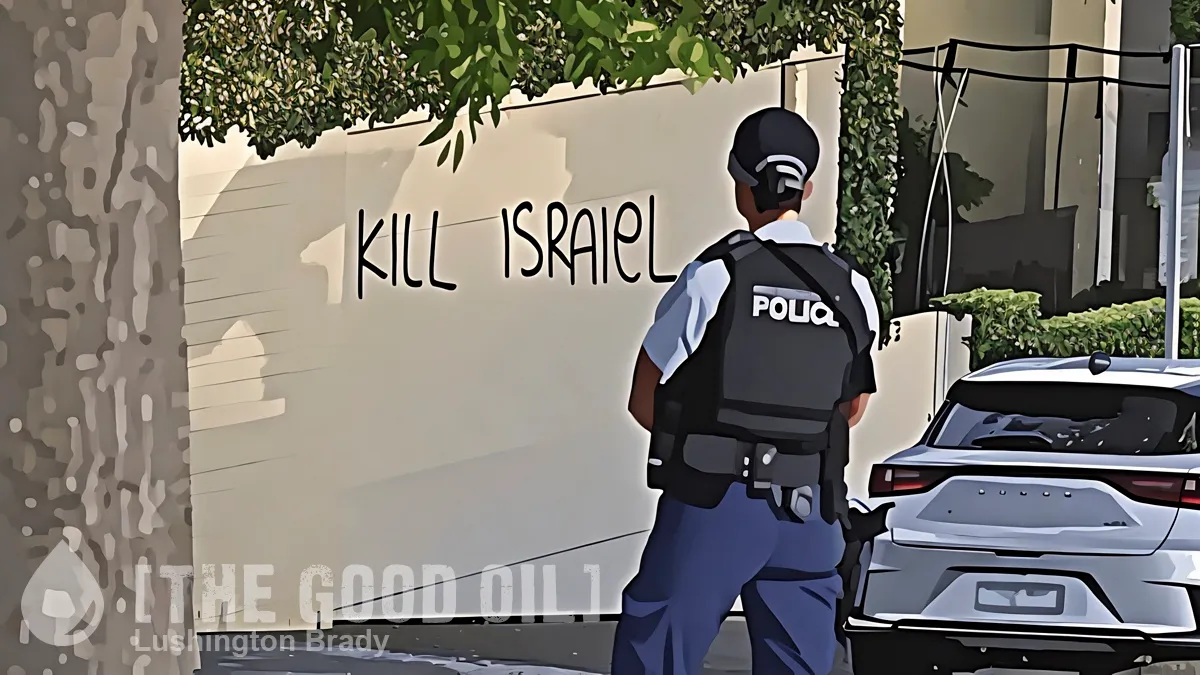Table of Contents
With Abdul Nacer Benbrika, the leader of one of Australia’s largest terror cells, nearing the end of his sentence, authorities are facing yet another instance of a growing problem: what to do with jihadis moving back into the general community?
The government has cancelled Benbrika’s citizenship as a secondary move, should they fail to keep him behind bars after his initial sentence expires – but the problem isn’t going away. Whether it’s returning ISIS foreign fighters who have participated in heinous crimes overseas or local jihad-mongers, the problem is the same: how can we be sure they’ve given up their jihadin’ ways.
In fact, in a great many cases, they haven’t. Even if they pretend otherwise.
Law enforcement is concerned extremists are “faking” deradicalisation after revelations almost half of convicted terrorists have breached strict conditions placed upon them once released from jail.
The AFP has revealed three of eight convicted terrorists on control orders have been arrested for violating rules placed upon them to keep the community safe.
This follows another horrifying revelation: that jihadists are using “de-radicalisation” themselves as recruiting tools. Convicted jihadists are also running recruitment programs in jails.
So, what happens when they’re out?
Courts can issue control orders on convicted terrorists or suspects after they finish their jail sentence, imposing bail-like conditions such as curfews, limits on who they interact with, and how they use electronic devices.
Police Commissioner Reece Kershaw said[…]“In our view, a lot of these individuals haven’t changed their ideologies and that still remains a constant concern to us,” he said.
“What we’re concerned about are people who have been allegedly deradicalised, but they’ve faked that and got through their tests.
Not only are “de-radicalisation” and control orders often useless, but they also cost the taxpayer an absolute fortune. The cost of monitoring even one jihadist can easily run to a million dollars or more.
Liberal Senator Claire Chandler said the revelations were alarming, particularly as monitoring convicted terrorists on control orders was resource-intensive[…]
“It seems to me one of the best tactics to keep our community safe would be to keep these people in prison as long as possible.”
Mr Kershaw said he would support that view.
He was pressed on whether those on control orders should be out in the community.
“Most police officers would say no,” he replied.
In fact, we’ve seen the horrific consequences of convicted jihadis crossing their heart and solemnly swearing that they’ll be a good boy: the Vienna terrorist who murdered four people and injured 27 others had passed a “de-radicalisation” program after serving his jail sentence for trying to join ISIS.

Faced with the unpalatable truth that jihadism is a deadly, continuing truth, naturally the media respond by shouting, “Look! Over there! A Nazi!” Peter Dutton isn’t about to be diverted, though.
Home Affairs Minister Peter Dutton told reporters on Friday that intelligence agencies treated any violent threat with the same seriousness.
“If there’s a lunatic who is preaching some neo-nazi propaganda, or some perverted interpretation of the Quran, and they’re there with the same desire to hurt Australians, they get treated exactly the same way by ASIO,” he said.
“If somebody wants to blow up a movie theatre, or somebody wants to go in with a semi-automatic weapon into a food court, I don’t care what the dress is, their religion, their skin color or their creed. I don’t care. Our resources will be applied to neutralize that threat.”
Mr Kershaw said the AFP was “alive to the growing threat” of right-wing extremism, whose adherents were more likely to have access to firearms.
But AFP Deputy Commissioner Ian McCartney told the committee that law enforcement was particularly hampered in monitoring right-wing organisations, which often operated on the fringes of internet.
“It’s a challenge. It’s online, we’re talking about encrypted communications and the dark web,” he said.
The Australian
Which is exactly true of Islamic extremism, too. So, why the focus on right-wing extremism?
No-one would be foolish enough to deny that it exists, but if we’re talking “runs on the board”, the jihadis are far and away the greatest threat. Of the dozens of attacks and foiled attacks committed in Australia over the past decade or more, just two allegedly planned attacks were the work of right-wing extremists. Of course the media will point to Christchurch killer Brenton Tarrant, but, while Tarrant’s crime was shocking, his ideological motive was very far from clearly “right-wing”. In fact, Tarrant shares more common ground with Extinction Rebellion than he does the neo-Nazis.
On the other hand, police need to make sure that they’re not still fighting the last war – but if the European experience is anything to go by, the threat of jihadi terror is very, very far from over.
Please share this article so that others can discover The BFD









